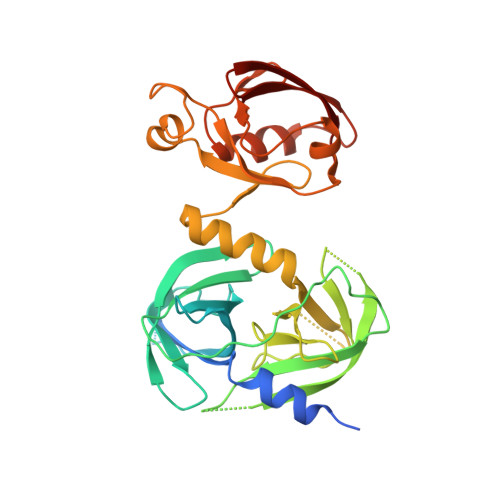Structures of DegQ from Legionella pneumophila Define Distinct ON and OFF States.
Schubert, A., Wrase, R., Hilgenfeld, R., Hansen, G.(2015) J Mol Biol 427: 2840-2851
- PubMed: 26205420
- DOI: https://doi.org/10.1016/j.jmb.2015.06.023
- Primary Citation of Related Structures:
4YNN, 4YO1 - PubMed Abstract:
HtrA (high-temperature requirement A) family proteins play important roles in protein-quality control processes in the bacterial periplasm. A common feature of all members of this family is their modular organization comprising a chymotrypsin-like protease domain and at least one PDZ (postsynaptic density of 95 kDa, disks large homolog 1 and zonula occludens 1) domain. All characterized HtrA proteins assemble into complex oligomers consisting of typically 3-24 monomers, which allow a tight regulation of proteolytic activity. Here, we provide evidence that the assembly of proteolytically active, higher-order complexes of DegQ from Legionella pneumophila is triggered by the binding of substrate-derived peptides. Crystal structures of inactive 3-mers and active 12-mers of DegQ reveal molecular details of elements of a conserved allosteric activation cascade that defines distinct protease ON and OFF states. Results from DegQ(Lp) variants harboring structure-based amino acid substitutions indicate that peptide binding to the PDZ1 domain is critical for proteolytic activity but not for the formation of higher-order oligomers. Combining structural, mutagenesis and biochemical data, we show that, in contrast to the proteolytic activity, the chaperone function of DegQ is not affected by the state of the activation cascade.
Organizational Affiliation:
Institute of Biochemistry, Center for Structural and Cell Biology in Medicine, University of Lübeck, Ratzeburger Allee 160, 23538 Lübeck, Germany.















